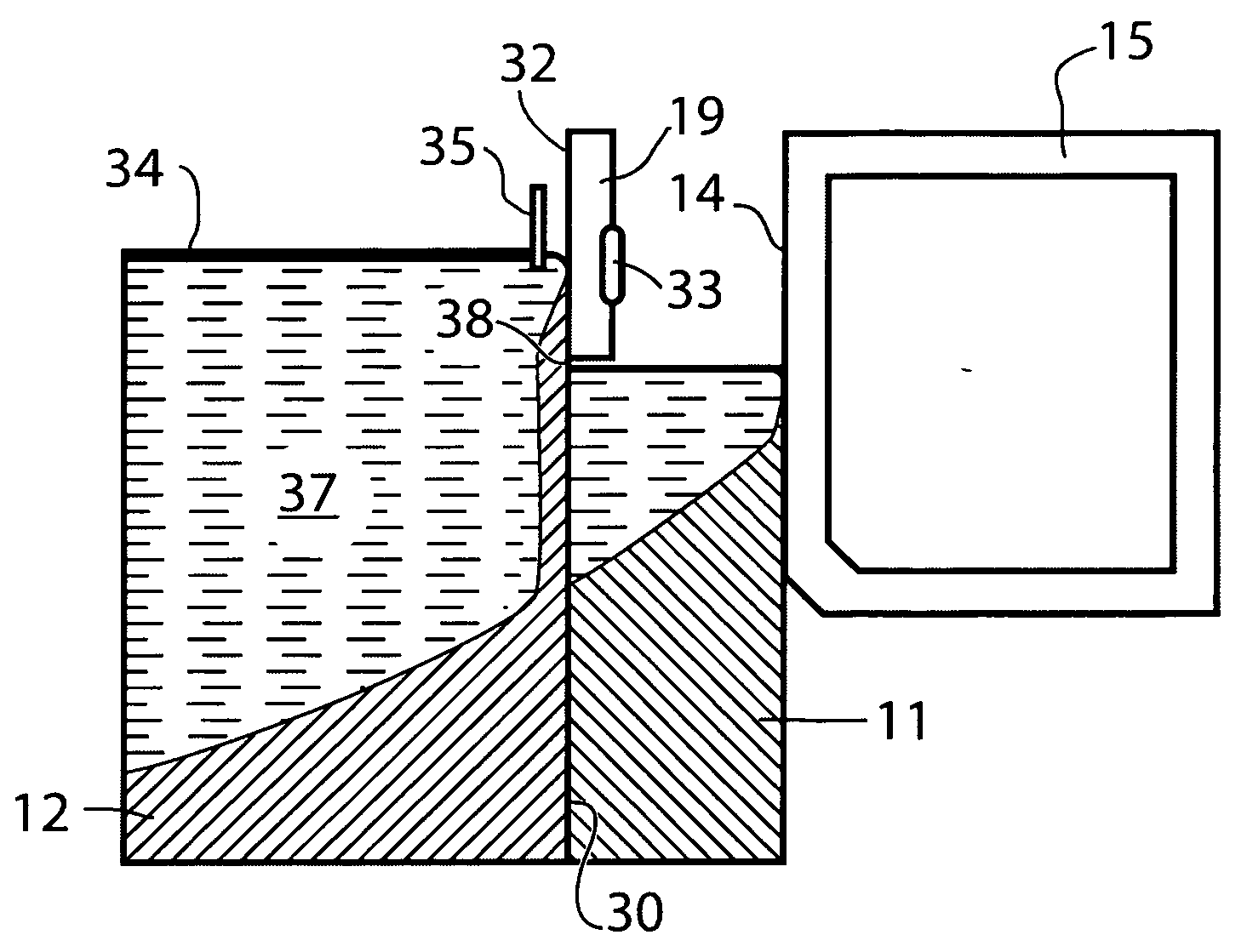Oxide restraint during co-casting of metals
- Summary
- Abstract
- Description
- Claims
- Application Information
AI Technical Summary
Benefits of technology
Problems solved by technology
Method used
Image
Examples
Embodiment Construction
[0022]The present invention may be employed with co-casting of various kinds and is especially effective when used with direct chill casting apparatus of the type described, for example, in U.S. Patent Publication No. 2005 / 0011630 mentioned above. This kind of apparatus makes it possible to cast metals by sequential solidification to form at least one outer layer (e.g. a cladding layer) on an inner layer (e.g. a core layer) of a metal ingot. For the sake of completeness, apparatus of this kind is briefly described below, although it should be kept in mind that the invention may also be used with other kinds of co-casting apparatus, e.g. apparatus as described in U.S. Pat. No. 6,705,384.
[0023]It should be explained that the terms “outer” and “inner” to describe metal layers of an ingot are used herein quite loosely. For example, in a two-layer structure, there may strictly speaking be no outer layer or inner layer as such, but an outer layer is one that is normally intended to be exp...
PUM
| Property | Measurement | Unit |
|---|---|---|
| distance | aaaaa | aaaaa |
| distance | aaaaa | aaaaa |
| size | aaaaa | aaaaa |
Abstract
Description
Claims
Application Information
 Login to View More
Login to View More - R&D
- Intellectual Property
- Life Sciences
- Materials
- Tech Scout
- Unparalleled Data Quality
- Higher Quality Content
- 60% Fewer Hallucinations
Browse by: Latest US Patents, China's latest patents, Technical Efficacy Thesaurus, Application Domain, Technology Topic, Popular Technical Reports.
© 2025 PatSnap. All rights reserved.Legal|Privacy policy|Modern Slavery Act Transparency Statement|Sitemap|About US| Contact US: help@patsnap.com



